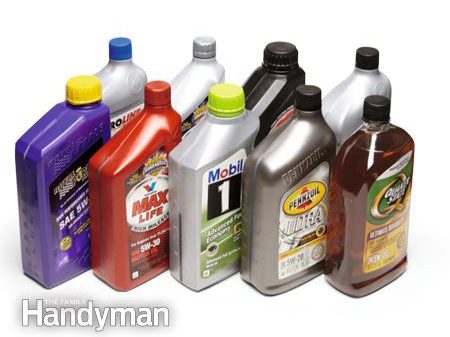
Choosing the right engine oil and oil filter
Whether you change your engine oil or have a shop do it for you, choosing the right engine oil, oil filter and service interval has never been more challenging. Even if you follow the oil type and viscosity recommendations shown in your car’s owner’s manual, you still have at least a dozen oil formulations to choose from. And oil filters come in just as many flavours. You can buy a $14 filter with the highest dirt-holding specifications and the longest mileage rating. But do you need to spend that much if you change your oil on schedule? Then there’s the issue of extended drain intervals. Can you really go 20,000 to 25,000 kilometres between oil changes?
We contacted experts at Valvoline, Mobil 1, Pennzoil, Royal Purple, Fram and WIX Filters to get you up-to-date advice that you can take to the bank. And we’ll kill off a few myths in the process. But first, a quick lesson in the basics of engine lubrication.
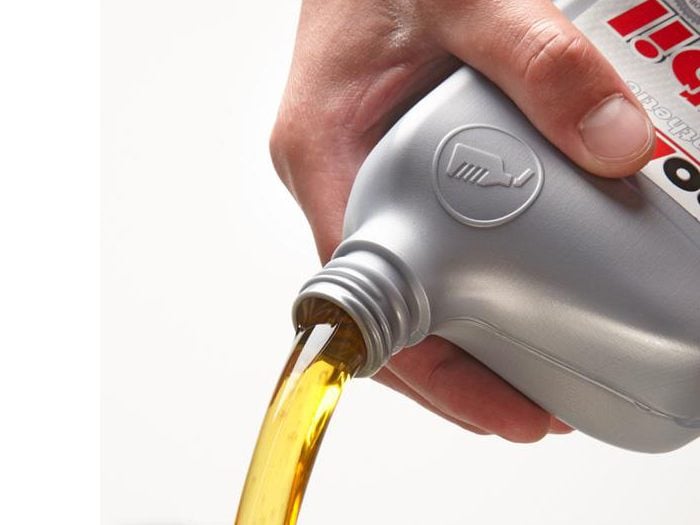
Engine Oil Primer
Oil’s main job is to create an extremely thin cushioning film to separate metal components and prevent contact as the parts rotate and bang against one another. Inside the combustion chamber, the oil film acts as a sealant to close the gap between the piston rings and the cylinder wall. That constant sliding, pounding and shearing friction creates heat. So oil’s second job is to carry away the heat of friction and cool metal parts.
Next, oil has to clean the engine and carry dust, dirt, combustion by-products (soot and acid) and the remnants of degraded oil off to the filter to be captured. In addition, oil must neutralize acids, prevent metal from corroding, and keep foaming as whirling parts whip air into it. And it contains antioxidants to protect itself against breakdown.
Oil does all these things. But first it has to circulate. To do that, it must flow well. And that’s where it gets complicated. Thin oil (5-weight) pumps well when cold. But it thins out when hot, making it harder to maintain a cushioning film. Thicker oil (30-weight), on the other hand, maintains a strong cushioning film that doesn’t thin when hot. But it’s almost impossible to pump when cold.
To get the best of both worlds, carmakers specify a multi-viscosity oil (5W-30, for example). It’s thin and pumps when cold, but thickens as it heats up (see “Regular Oil vs. Synthetic” in the following slides). Engineers determine exactly what viscosity range is best suited for any particular engine.
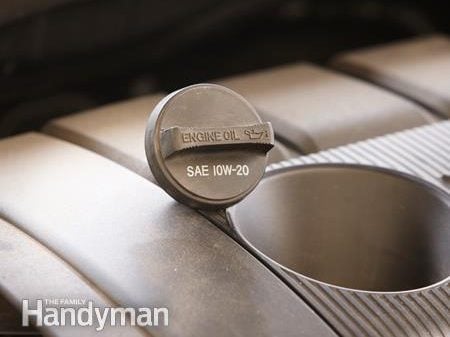
Always follow the manufacturer’s viscosity recommendation
Aside from neglect, using the wrong oil viscosity is the single most common cause of premature engine wear. And most of that wear occurs during cold starts. What’s considered a cold start? If your vehicle hasn’t run for three or more hours, it’s cold-even if you live in Arizona!
The carmaker’s recommendations are in your owner’s manual or stamped right on the oil filler cap. Never second-guess the carmaker’s recommendations, even if your know-it-all buddy says a different viscosity oil will work better. Ignore the carmaker’s recommendations at your own risk.
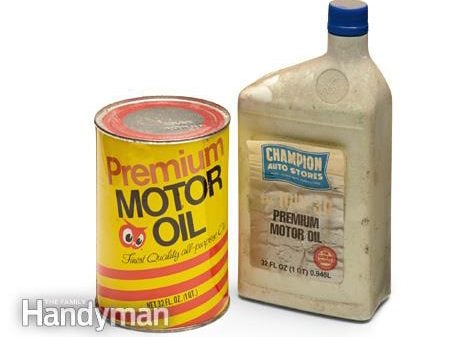
Get rid of old oil
Oil has a shelf life of about five years. So if you bought a truckload of oil on sale 20 years ago, don’t think you can pour it in your 2013 truck. Oil degrades in the can or bottle just from sitting in your garage.
Ask the Experts: High Mileage
Q: My car has high miles and my buddy told me to switch from 5W-30 to 20W-50 oil to get better piston sealing.
A: A 20W-50 oil does provide better piston-to-cylinder film strength. But it’ll cause more engine wear at cold startup. Use a high mileage (HM) 5W-30 oil instead and get the same protection at start-up and better film strength when hot.
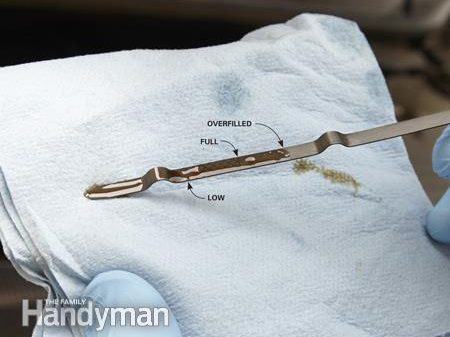
Fill only to the top line on the dipstick
Overfilling the crankcase is really bad for your engine. Even if your engine leaks or burns oil and you’re tired of topping it off, overfilling isn’t the answer. Running an overfilled engine actually causes excessive oil consumption that can destroy your catalytic converter (about $1,000 to repair). And, when the oil level is too high, rotating engine parts whip air into it, turning it into foam. Foam doesn’t lubricate or cool, so engine parts overheat, wear and fail.
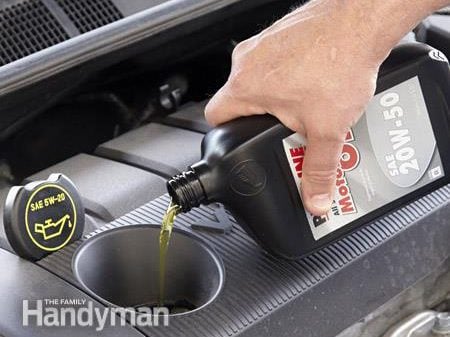
Adding the wrong oil is better than driving with no oil
You’re supposed to check your oil level regularly. But most of us don’t. If you’re driving a leaker or an oil burner and find yourself critically low on oil, you’ve got to act fast or you’ll destroy the engine. If you can’t find the correct oil at the nearest convenience store, it’s better to add the wrong oil than to continue driving on oil vapor. Grab a bottle of multiviscosity oil that’s the closest to the manufacturer’s recommendation and pour in enough to restore the oil level. If you only added 1 qt., you can wait until your next oil change. But if you’ve added 2 or more quarts of the wrong oil, get your vehicle in for an oil change soon.
Oh, and fix the leak that caused the low oil condition.
Ask the Experts: Do oil brands matter?
Q: My engine needs oil. I have a bottle with the correct viscosity and the current “SN” rating, but it’s a different brand. Can I use it to top off my engine?
A: Mixing different brands is fine.
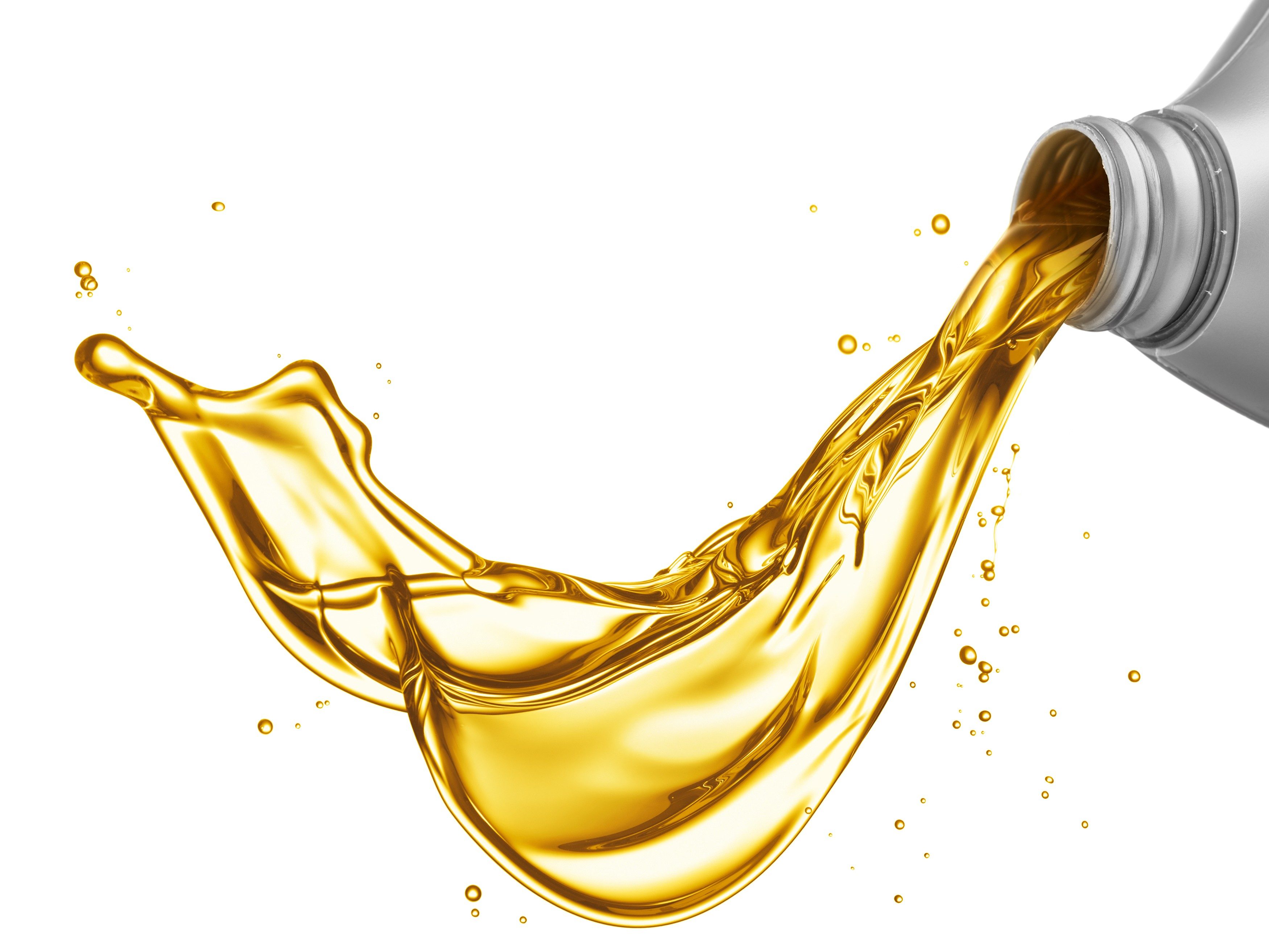
Oil for high-mileage cars
High-mileage (HM) oil contains seal conditioners that rejuvenate brittle aged seals. And it contains additives to improve film strength when the oil is hot. Depending on the brand, HM oil may also include more anticorrosive, acid-neutralizing and antiwear additives. If you have a high-mileage engine and want to keep it running, HM oil is worth the higher price.
Ask the Experts: Synthetic oil mileage
Q: If I switch to synthetic oil, can I extend the drain intervals?
A: If your vehicle is covered by a warranty (factory or extended), you MUST follow the vehicle manufacturer’s recommended oil-change intervals even with synthetic oil. If you’re not covered by a warranty, consult the oil manufacturer for its recommended drain intervals.
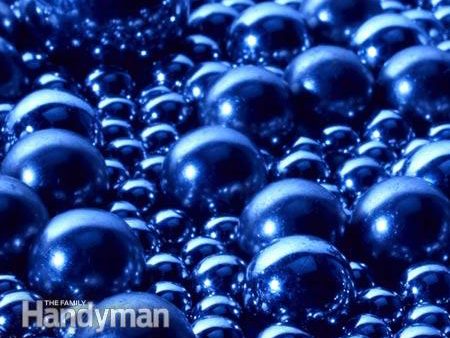
What’s the difference between regular oil and synthetic oil?
REGULAR OIL MOLECULES
Regular oil is a natural, mineral-based material, with molecules that vary in size. These ball bearings give you the picture. Imagine trying to slide on them!

What’s the difference between regular oil and synthetic oil?
SYNTHETIC OIL MOLECULES
Synthetic oil is made from oil and gas that have been broken apart and reassembled, molecule by molecule. The molecules are a uniform size, so the oil pumps better when cold and maintains a strong film when hot.
Ask the Experts: Switching from conventional to synthetic
Q: I’d like to switch to synthetic and read that because synthetics have better detergents, I need to flush my engine with solvents first.
A: Just make the switch-don’t ever flush your engine with solvents.
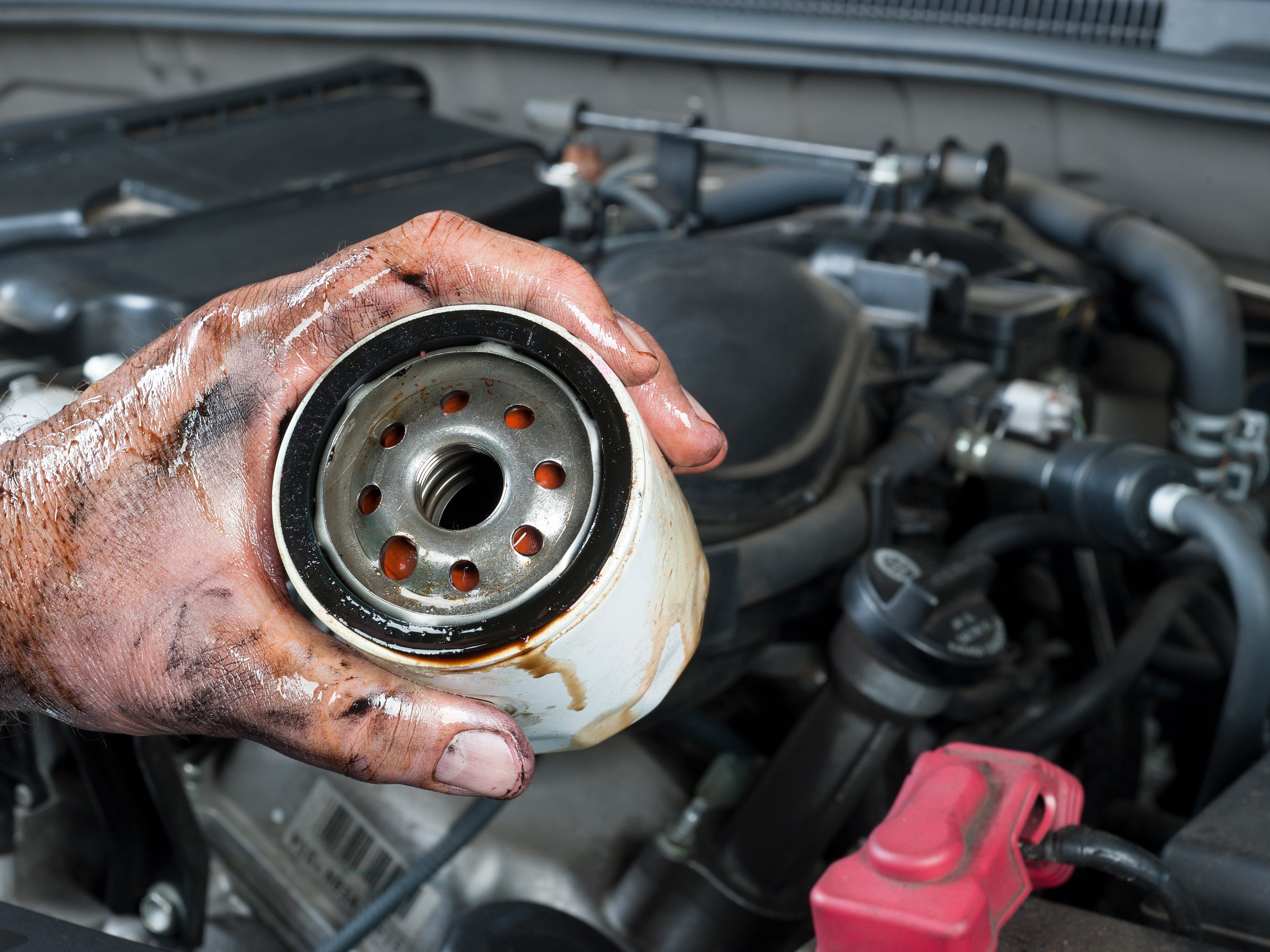
Buy a good filter for synthetic oil
Oil filter manufacturers usually make several grades of filters-good, better, best. If you use a mineral oil and change it and your filter on schedule, you don’t need to spend more for a better filter. But if you use a synthetic oil or intend to go longer between oil changes, buy a top-of-the-line name-brand filter.
Ask the Experts: Cartridge Filters
Q: How does installing a cartridge filter differ from traditional oil filters?
A: Many newer engines use a cartridge filter instead of a spin-on design. Always note the location of the O-ring as you remove the cap and replace it with the new O-ring in the filter box. Lube the O-ring with oil, and use a torque wrench set to the manufacturer’s specifications to tighten the cap.
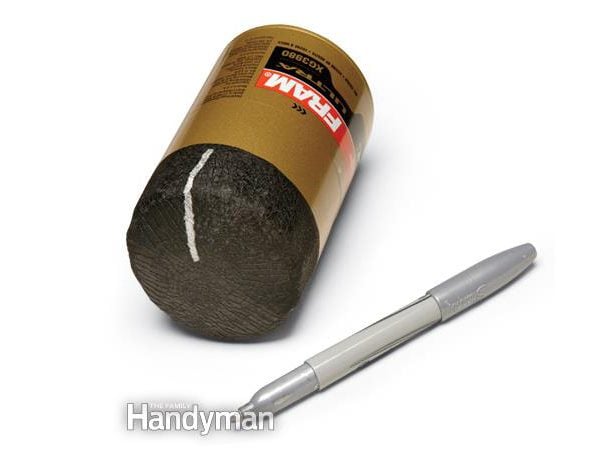
Mark the contact position when installing a new oil filter
Loose filters are the number one cause of oil leaks. Follow the tightening instructions on the box. Spin it on until the gasket contacts the mounting surface. Draw a line on the filter in the 12 o’clock position. (A white paint pen works well for black or other dark-colored filters. Black felt pens work well on brighter-colored filters.) Hand-tighten the recommended number of turns and then stop.
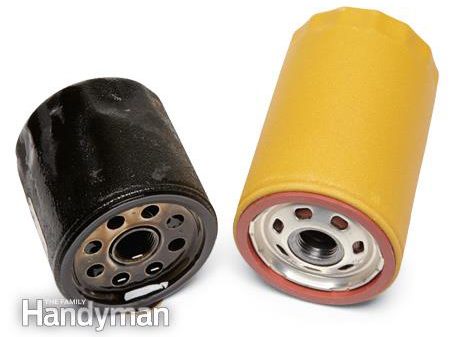
Bigger oil filters aren’t necessarily better
Oil filters are application-specific. Don’t think you’re getting better filtration by substituting a larger filter just because it fits the threads on your engine. It may have a different filter media, flow rate or bypass valve rating than the correct filter. Don’t second-guess the filter manufacturer.
Check out more do-it-yourself car maintenance tips!
Explore Reader’s Digest Cars.